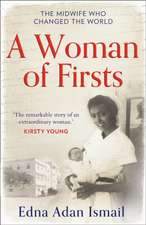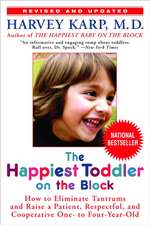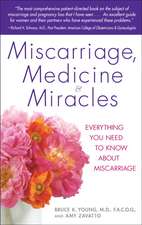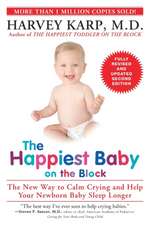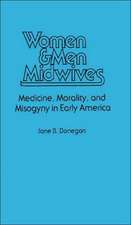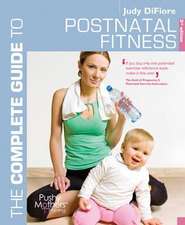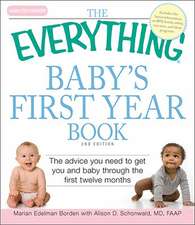The Doula Guide to Birth: Secrets Every Pregnant Woman Should Know
Autor Rachel Zimmerman, Ananda Loween Limba Engleză Paperback – 30 apr 2009
What exactly do doulas do?
How to find one that suits you.
What are the “trade secrets” only doulas know but every woman should be aware of (even if you don’t have a doula)?
In The Doula Guide to Birth, senior-level doula Ananda Lowe and award-winning health reporter Rachel Zimmerman have written a most comprehensive book that draws on the wisdom of these skilled experts, whose experience with doctors, midwives, nurses, and hospitals makes them invaluable advocates before, during, and after birth.
* Labor techniques anyone can use
* Pain medication: do you, don’t you—and when?
* What dads and loved ones need and can do best
* When should you really go to the hospital in labor?
* How to prepare for unexpected medical procedures, including cesareans and epidural
* Postpartum—what it’s really like
* A clip-out chart of labor techniques, birth plan worksheets, and much more
Combining science, wit, warmth, and support, as well as the inspirational stories of dozens of mothers and their partners, you’ll find the “doula viewpoint” on every major pregnancy and delivery issue, making this one of the most important childbirth books you’ll ever read and recommend.
Preț: 106.64 lei
Nou
Puncte Express: 160
Preț estimativ în valută:
20.41€ • 21.82$ • 17.01£
20.41€ • 21.82$ • 17.01£
Carte disponibilă
Livrare economică 27 martie-10 aprilie
Preluare comenzi: 021 569.72.76
Specificații
ISBN-13: 9780553385267
ISBN-10: 0553385267
Pagini: 304
Dimensiuni: 131 x 210 x 17 mm
Greutate: 0.23 kg
Editura: Bantam
ISBN-10: 0553385267
Pagini: 304
Dimensiuni: 131 x 210 x 17 mm
Greutate: 0.23 kg
Editura: Bantam
Notă biografică
Ananda Lowe served for seven years as Assistant Director of the Association of Labor Assistants and Childbirth Educators, which conducts the oldest doula-training program in the country. She is currently a senior-level doula in Boston as well as a maternity massage specialist.
Rachel Zimmerman is an award-winning reporter who covers health and medicine for the Wall Street Journal. She lives in Cambridge, Massachusetts.
Rachel Zimmerman is an award-winning reporter who covers health and medicine for the Wall Street Journal. She lives in Cambridge, Massachusetts.
Extras
Chapter One
Doulas Are Great Pain Relief
I did not end up taking pain medicine in labor, but I almost feel like I did. Instead, my partner and my doula took turns massaging me for my whole labor, which lasted three days. While I was pregnant, our doula taught us some easy ways to use touch, and she said our homework was to practice cuddling, which was fine with us!
By the time labor came, my partner and I knew how to keep touching naturally, and it turned out to be a great relief for the pain. My labor was a lot of work, but our doula was there every moment, and the nurturing from her and my partner really was like a wonderful drug in itself.
—Sylvia, 29, real-estate agent, mother of two
G iving birth with a doula is the most important trend of modern maternity care. The word comes from the Greek, translated to mean “slave” or “servant.” It was first used in the 1970s by the anthropologist Dana Raphael, who adopted it to mean a helper of new mothers. (Though some Greeks and doulas are not crazy about the word, it has become commonplace.)
Doulas are today’s new experts in labor. Trained as professional birth companions, they act as highly skilled guides through the dramatic forces of labor. Using a combination of wit, science, and the ancient (but nearly lost) art of human support in birth, doulas have a powerful effect on the first major rite of passage we all must complete: being born.
And we like to think of it this way too: doulas can be your best form of pain relief in birth.
Their philosophy is to stay with you constantly, from start to finish in active labor, without taking breaks or changing shifts (which is not possible for most doctors, nurses, or midwives in hospitals). They come equipped with the ability to remain calm as the waves of labor intensify, to provide solid guidance for new dads and loved ones, to advocate for you with skill, and to remember all of the available labor techniques, with clear insight about when it’s wise to use each one.
Birth doulas, also known as labor assistants, may guide you in: breathing methods or relaxation images, intensive emotional coaching, feedback on whether your labor pain is within normal range, and ways to actually sleep during the marathon work of labor. They may offer techniques to prevent the extra pain of back labor; delivery positions that use gravity in your favor; and even advanced specialties, such as hypnotherapy for pain relief, professional massage therapy, or acupuncture.
Doulas can help first-time parents give birth with less fear, help experienced mothers find new strength, and help women giving birth after a cesarean have more options.
In 2002 and 2006, the respected organization Childbirth Connection issued two groundbreaking reports, Listening to Mothers I and II, the first-ever surveys of women’s own experiences giving birth across the United States. And when it came to labor support, mothers rated a doula’s help more effective than that of any other health-care provider.
In most cases, a doula works independently—directly for you—which allows her to openly serve as your advocate. Also, doulas are often the only maternity-care providers who have worked at every hospital in town. This gives them a rare bird’s-eye view of important birthing trends, advances, and setbacks in your community.
Doulas have something new to say about birth. Amid climbing cesarean rates and other national and worldwide debates in maternal health care, the doula movement has been taking hold as a way for pregnant women to regain more control over their birthing process.
If you’ve already decided to use a doula, this book will help you make the most of what she has to offer. If you are new to this revolutionary trend, we’ll be providing information that will help you decide whether to work with a doula. And even if you are not able to work with one, you will benefit from the doula wisdom that can help you have a more empowered birth.
In writing this book, we stand on the shoulders of other authors who first introduced the world to the idea of doulas, including Dr. John Kennell, Dr. Marshall Klaus, and Phyllis Klaus, CSW, the pioneering researchers who have studied and written about the benefits of doulas for the past three decades. The Klauses and Dr. Kennell collected much of the data on doulas that is accepted in the field now. Multiple studies show that the presence of a labor assistant can cut your chances in half for encountering many problems and interventions in birth. Most impressive, this includes the need for such common but major medical procedures as epidurals and cesareans.
Our goal is to build on this work and share with the public the actual techniques, skills, and trade secrets that allow doulas to achieve such remarkable results. As doulas shape their emerging profession, they are contributing original ideas to central issues such as how long labor should take, the most effective ways to prepare for normal and unusual levels of pain in labor, and much more.
The Doula Guide to Birth is a book for all pregnant women—single, married, partnered, heterosexual, lesbian, and mothers whose baby will be adopted by another family. Doulas benefit all types of families by honoring their choices, relieving them of the pressure of having to be labor experts, and allowing them to give birth with the security of a familiar guide. Also, partners, fathers, and loved ones are invited to read all sections of this book, and chapter 2 speaks directly to them.
While the authors of this book live in the United States, where the modern doula movement was born, the doula trend has become an international phenomenon. That is why you will see references to birthing customs in various countries, meant to address our readers globally, and to remind us all of our connection to mothers around the world.
Support Is What Gets Women Through Labor
For ages, mothers gave birth surrounded by women who knew them well, whether it was a couple of local wise women or a crowd of female relatives and neighbors. When birth was moved into hospitals in the last century, this took a heavy toll on women’s ability to rely on a personal support system in labor. Medical doctors did not realize that isolating women made birth more difficult and painful.
Birth is normally the most profound event of our lives. Like running a marathon yet even more intense, it is easier to accomplish with the steady faith of admirers and friends, and the know-how of those who have been there before. While modern maternity care often leaves mothers and fathers alone in labor, doulas focus their attention on you every moment of the way. This kind of social support provides a sense of security that may be the most important factor for getting through birth.
The doula approach is usually not to leave your delivery room unless it’s requested, or she needs a bathroom break or a meal. At those moments, she gives her reassurances that she will quickly return. Mothers in labor are often keenly aware of when their supporters are missing from the room. Depending on the style of a particular doula, as well as your own needs and preferences, a doula may offer support by being a calm and quiet presence during many hours of labor, or she might gently coach and talk you through nearly every contraction.
Human support relieves pain, reduces fear of the unknown, and makes labor manageable in a way that isn’t possible when that support is removed. In fact, throughout most of history, human support was entirely what women relied on to ease the way through childbearing (pain drugs simply were not available). And the tradition of women helping women benefited more than the laboring mother. It also benefited her supporters; other women learned what to expect when they would give birth, and they also gained confidence in their ability to help someone through labor—an important achievement in itself.
In recent decades, ordinary women saw the need for doulas and began answering the call. They looked to trailblazers like Rahima Baldwin Dancy of Informed Homebirth/Informed Birth & Parenting (later to become ALACE), Paulina Perez, and Penny Simkin of Doulas of North America (later to become DONA International), who were among the first to begin teaching women how to support laboring mothers. Doulas are usually trained by attending an intensive seminar over several days and then studying textbooks on birth. Ultimately though, a doula’s knowledge comes from an experience most doctors and nurses never get to have—staying with women nonstop through their entire labors. The rise of doulas is a powerful example of women taking grassroots action to help themselves and other women.
Doulas: The Best Medicine
Although doulas are not trained in medical schools, they have an important effect on birth, medically.
Some women seek a labor assistant to help them achieve a goal of natural childbirth. However, even if that is not a mother’s main goal, a doula has the effect of reducing the likelihood of medical interventions, along with their possible risks.
According to the Cochrane Collaboration, the respected organization that reviews international clinical research, studies of more than one thousand mothers show that the presence of a doula results in lower rates of all types of pain medicine, cesareans, and deliveries with forceps or vacuums. Smaller studies show that rates of other procedures are reduced with a doula, including breaking the bag of waters artificially and the use of drugs to speed labor. (These were controlled studies comparing groups of women who were otherwise similar.)
In countries including the United States and Canada, the most common form of pain relief in birth has become the epidural, a type of anesthesia that numbs the body from the waist down. But increasingly, women are learning they can also have the support of a doula, instead of or in addition to medication, and they’re reporting more positive birth experiences—including less pain. All women wonder how they will manage labor pain; a doula helps settle their fears. And while anesthesia and surgery have become common in labor, medical procedures for birth (like those for any health condition) have potential side effects.
The Listening to Mothers surveys showed that after giving birth, the majority of women nationally said they had not understood the risks of the medical interventions they received in labor. As numerous doulas have observed, when doctors discuss consent for an epidural with pregnant women, they do not always fully explain one of its most important side effects: epidurals lower the blood pressure of one in three mothers, and therefore lower blood flow and oxygen to the baby. This can create changes in the baby’s heart rate which may be seen as “fetal distress,” a cause of further interventions and cesareans.
Doulas Are Great Pain Relief
I did not end up taking pain medicine in labor, but I almost feel like I did. Instead, my partner and my doula took turns massaging me for my whole labor, which lasted three days. While I was pregnant, our doula taught us some easy ways to use touch, and she said our homework was to practice cuddling, which was fine with us!
By the time labor came, my partner and I knew how to keep touching naturally, and it turned out to be a great relief for the pain. My labor was a lot of work, but our doula was there every moment, and the nurturing from her and my partner really was like a wonderful drug in itself.
—Sylvia, 29, real-estate agent, mother of two
G iving birth with a doula is the most important trend of modern maternity care. The word comes from the Greek, translated to mean “slave” or “servant.” It was first used in the 1970s by the anthropologist Dana Raphael, who adopted it to mean a helper of new mothers. (Though some Greeks and doulas are not crazy about the word, it has become commonplace.)
Doulas are today’s new experts in labor. Trained as professional birth companions, they act as highly skilled guides through the dramatic forces of labor. Using a combination of wit, science, and the ancient (but nearly lost) art of human support in birth, doulas have a powerful effect on the first major rite of passage we all must complete: being born.
And we like to think of it this way too: doulas can be your best form of pain relief in birth.
Their philosophy is to stay with you constantly, from start to finish in active labor, without taking breaks or changing shifts (which is not possible for most doctors, nurses, or midwives in hospitals). They come equipped with the ability to remain calm as the waves of labor intensify, to provide solid guidance for new dads and loved ones, to advocate for you with skill, and to remember all of the available labor techniques, with clear insight about when it’s wise to use each one.
Birth doulas, also known as labor assistants, may guide you in: breathing methods or relaxation images, intensive emotional coaching, feedback on whether your labor pain is within normal range, and ways to actually sleep during the marathon work of labor. They may offer techniques to prevent the extra pain of back labor; delivery positions that use gravity in your favor; and even advanced specialties, such as hypnotherapy for pain relief, professional massage therapy, or acupuncture.
Doulas can help first-time parents give birth with less fear, help experienced mothers find new strength, and help women giving birth after a cesarean have more options.
In 2002 and 2006, the respected organization Childbirth Connection issued two groundbreaking reports, Listening to Mothers I and II, the first-ever surveys of women’s own experiences giving birth across the United States. And when it came to labor support, mothers rated a doula’s help more effective than that of any other health-care provider.
In most cases, a doula works independently—directly for you—which allows her to openly serve as your advocate. Also, doulas are often the only maternity-care providers who have worked at every hospital in town. This gives them a rare bird’s-eye view of important birthing trends, advances, and setbacks in your community.
Doulas have something new to say about birth. Amid climbing cesarean rates and other national and worldwide debates in maternal health care, the doula movement has been taking hold as a way for pregnant women to regain more control over their birthing process.
If you’ve already decided to use a doula, this book will help you make the most of what she has to offer. If you are new to this revolutionary trend, we’ll be providing information that will help you decide whether to work with a doula. And even if you are not able to work with one, you will benefit from the doula wisdom that can help you have a more empowered birth.
In writing this book, we stand on the shoulders of other authors who first introduced the world to the idea of doulas, including Dr. John Kennell, Dr. Marshall Klaus, and Phyllis Klaus, CSW, the pioneering researchers who have studied and written about the benefits of doulas for the past three decades. The Klauses and Dr. Kennell collected much of the data on doulas that is accepted in the field now. Multiple studies show that the presence of a labor assistant can cut your chances in half for encountering many problems and interventions in birth. Most impressive, this includes the need for such common but major medical procedures as epidurals and cesareans.
Our goal is to build on this work and share with the public the actual techniques, skills, and trade secrets that allow doulas to achieve such remarkable results. As doulas shape their emerging profession, they are contributing original ideas to central issues such as how long labor should take, the most effective ways to prepare for normal and unusual levels of pain in labor, and much more.
The Doula Guide to Birth is a book for all pregnant women—single, married, partnered, heterosexual, lesbian, and mothers whose baby will be adopted by another family. Doulas benefit all types of families by honoring their choices, relieving them of the pressure of having to be labor experts, and allowing them to give birth with the security of a familiar guide. Also, partners, fathers, and loved ones are invited to read all sections of this book, and chapter 2 speaks directly to them.
While the authors of this book live in the United States, where the modern doula movement was born, the doula trend has become an international phenomenon. That is why you will see references to birthing customs in various countries, meant to address our readers globally, and to remind us all of our connection to mothers around the world.
Support Is What Gets Women Through Labor
For ages, mothers gave birth surrounded by women who knew them well, whether it was a couple of local wise women or a crowd of female relatives and neighbors. When birth was moved into hospitals in the last century, this took a heavy toll on women’s ability to rely on a personal support system in labor. Medical doctors did not realize that isolating women made birth more difficult and painful.
Birth is normally the most profound event of our lives. Like running a marathon yet even more intense, it is easier to accomplish with the steady faith of admirers and friends, and the know-how of those who have been there before. While modern maternity care often leaves mothers and fathers alone in labor, doulas focus their attention on you every moment of the way. This kind of social support provides a sense of security that may be the most important factor for getting through birth.
The doula approach is usually not to leave your delivery room unless it’s requested, or she needs a bathroom break or a meal. At those moments, she gives her reassurances that she will quickly return. Mothers in labor are often keenly aware of when their supporters are missing from the room. Depending on the style of a particular doula, as well as your own needs and preferences, a doula may offer support by being a calm and quiet presence during many hours of labor, or she might gently coach and talk you through nearly every contraction.
Human support relieves pain, reduces fear of the unknown, and makes labor manageable in a way that isn’t possible when that support is removed. In fact, throughout most of history, human support was entirely what women relied on to ease the way through childbearing (pain drugs simply were not available). And the tradition of women helping women benefited more than the laboring mother. It also benefited her supporters; other women learned what to expect when they would give birth, and they also gained confidence in their ability to help someone through labor—an important achievement in itself.
In recent decades, ordinary women saw the need for doulas and began answering the call. They looked to trailblazers like Rahima Baldwin Dancy of Informed Homebirth/Informed Birth & Parenting (later to become ALACE), Paulina Perez, and Penny Simkin of Doulas of North America (later to become DONA International), who were among the first to begin teaching women how to support laboring mothers. Doulas are usually trained by attending an intensive seminar over several days and then studying textbooks on birth. Ultimately though, a doula’s knowledge comes from an experience most doctors and nurses never get to have—staying with women nonstop through their entire labors. The rise of doulas is a powerful example of women taking grassroots action to help themselves and other women.
Doulas: The Best Medicine
Although doulas are not trained in medical schools, they have an important effect on birth, medically.
Some women seek a labor assistant to help them achieve a goal of natural childbirth. However, even if that is not a mother’s main goal, a doula has the effect of reducing the likelihood of medical interventions, along with their possible risks.
According to the Cochrane Collaboration, the respected organization that reviews international clinical research, studies of more than one thousand mothers show that the presence of a doula results in lower rates of all types of pain medicine, cesareans, and deliveries with forceps or vacuums. Smaller studies show that rates of other procedures are reduced with a doula, including breaking the bag of waters artificially and the use of drugs to speed labor. (These were controlled studies comparing groups of women who were otherwise similar.)
In countries including the United States and Canada, the most common form of pain relief in birth has become the epidural, a type of anesthesia that numbs the body from the waist down. But increasingly, women are learning they can also have the support of a doula, instead of or in addition to medication, and they’re reporting more positive birth experiences—including less pain. All women wonder how they will manage labor pain; a doula helps settle their fears. And while anesthesia and surgery have become common in labor, medical procedures for birth (like those for any health condition) have potential side effects.
The Listening to Mothers surveys showed that after giving birth, the majority of women nationally said they had not understood the risks of the medical interventions they received in labor. As numerous doulas have observed, when doctors discuss consent for an epidural with pregnant women, they do not always fully explain one of its most important side effects: epidurals lower the blood pressure of one in three mothers, and therefore lower blood flow and oxygen to the baby. This can create changes in the baby’s heart rate which may be seen as “fetal distress,” a cause of further interventions and cesareans.
Recenzii
“Ananda Lowe and Rachel Zimmerman are the perfect duo to bring The Doula Guide to Birth into life…an encouraging, informative and dynamic book for every pregnant woman to devour….Real advice from real women who have real experience, a passion for birth and a doula's heart for helping all families have great beginnings. Thank you for giving the world this gift.” —Barbara Harper, RN, Founder/Director, Waterbirth International, and author of Gentle Birth Choices
“I loaned this book to my pregnant best friend… She didn’t want to give it back, and only did so when I promised to return it to her.”—Marjorie Greenfield MD, author of Dr. Spock's Pregnancy Guide and Associate Professor Department of Obstetrics and Gynecology Case School of Medicine and University Hospitals of Cleveland
“Every expectant mother deserves access to the information, wisdom, and support so lovingly and masterfully offered in this book. If I could give every mother-to-be a gift it would be The Doula Guide to Birth because reading it will give them some of the experience of how it feels to be lovingly supported by a doula."—Pam Leo, author of Connection Parenting
“Throughout history doulas have been an important link to help women through labor and the bleary-eyed days postpartum. Finally, a resource that clearly and convincingly explains the science and the common sense of why we need doulas today more than ever. An excellent book!” —Tina Cassidy, author of Birth: The Surprising History of How We Are Born
“Being among the first to teach doulas to support laboring women and the author of the first book on the role of the birth doula, I am glad to see The Doula Guide to Birth added to the ranks of books available to childbearing women and was even more excited to read the knowledge the authors are sharing with their readers- pregnant women.”—Paulina (Polly) Perez, RN, author of Doula Programs: How to Start and Run a Private or Hospital-based Program with Success!
"Doulas play an increasingly popular and important role on the maternity scene today…The Doula Guide To Birth is a comprehensive and thoughtful book that describes exactly what doulas do, how doulas work, how they can improve your childbirth experience, and how you can incorporate a doula into your labor and delivery plans. Highly recommended to all pregnant women who wish to be fully informed about their options."—William Camann, MD, Co-author, Easy Labor
“I will gladly recommend this book to families in my prenatal classes…It will reassure women (and men) in their own abilities and shows how they can develop a positive and supportive setting for birth.”—Robin Snyder-Drummond, Certified Childbirth Educator, member of the Steering committee for Partners in Perinatal Health
“I loaned this book to my pregnant best friend… She didn’t want to give it back, and only did so when I promised to return it to her.”—Marjorie Greenfield MD, author of Dr. Spock's Pregnancy Guide and Associate Professor Department of Obstetrics and Gynecology Case School of Medicine and University Hospitals of Cleveland
“Every expectant mother deserves access to the information, wisdom, and support so lovingly and masterfully offered in this book. If I could give every mother-to-be a gift it would be The Doula Guide to Birth because reading it will give them some of the experience of how it feels to be lovingly supported by a doula."—Pam Leo, author of Connection Parenting
“Throughout history doulas have been an important link to help women through labor and the bleary-eyed days postpartum. Finally, a resource that clearly and convincingly explains the science and the common sense of why we need doulas today more than ever. An excellent book!” —Tina Cassidy, author of Birth: The Surprising History of How We Are Born
“Being among the first to teach doulas to support laboring women and the author of the first book on the role of the birth doula, I am glad to see The Doula Guide to Birth added to the ranks of books available to childbearing women and was even more excited to read the knowledge the authors are sharing with their readers- pregnant women.”—Paulina (Polly) Perez, RN, author of Doula Programs: How to Start and Run a Private or Hospital-based Program with Success!
"Doulas play an increasingly popular and important role on the maternity scene today…The Doula Guide To Birth is a comprehensive and thoughtful book that describes exactly what doulas do, how doulas work, how they can improve your childbirth experience, and how you can incorporate a doula into your labor and delivery plans. Highly recommended to all pregnant women who wish to be fully informed about their options."—William Camann, MD, Co-author, Easy Labor
“I will gladly recommend this book to families in my prenatal classes…It will reassure women (and men) in their own abilities and shows how they can develop a positive and supportive setting for birth.”—Robin Snyder-Drummond, Certified Childbirth Educator, member of the Steering committee for Partners in Perinatal Health
Descriere
From a skilled expert with 15 years of experience as a professional birth coach and an award-winning "Wall Street Journal" reporter comes the definitive guide to giving birth with a doula, and the secrets these practitioners use to help new mothers through labor.

